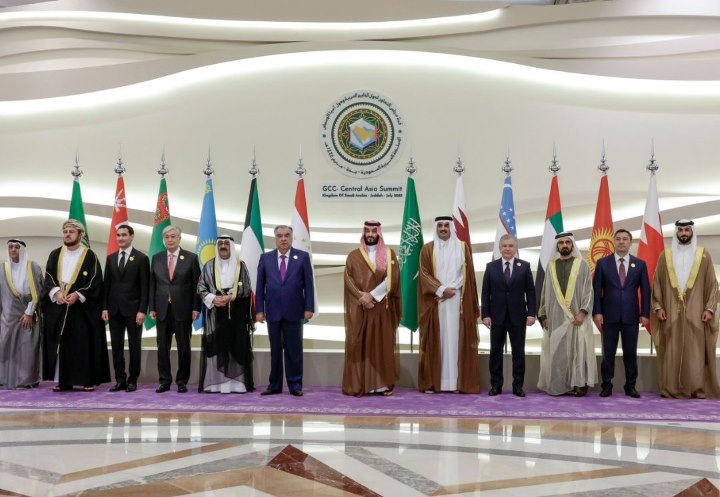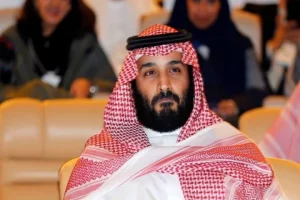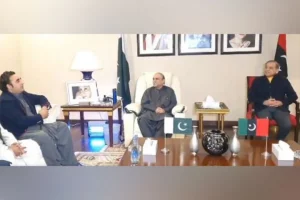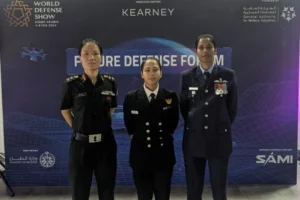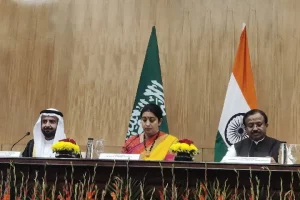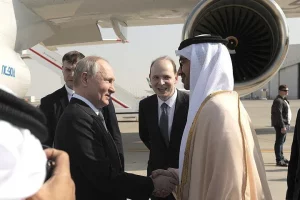July 19th saw yet another summit in the format of C5+ in Jeddah, Saudi Arabia. The summit took place between the Gulf Cooperation Council (Saudi Arabia, Bahrain, Kuwait, Oman, Qatar, and the United Arab Emirates), and the five Central Asian Republics – Kazakhstan, Kyrgyzstan, Tajikistan, Turkmenistan, and Uzbekistan.
In an article, the Saudi Press Agency said that “The GCC countries and the Central Asian countries (C5) — Kazakhstan, the Kyrgyz Republic, Tajikistan, Turkmenistan and Uzbekistan – all Muslim countries members of the Organization of Islamic Cooperation (OIC), have shared values and historical ties, and possess significant oil and gas resources that qualify them to play an influential role in the global energy security field. The Kingdom’s hosting of the GCC-Central Asia Summit reflects keenness to boost these relations, in conjunction with the GCC 18th consultative meeting and reflects the interest of Custodian of the Two Holy Mosques King Salman bin Abdulaziz Al Saud and His Royal Highness Prince Mohammed bin Salman bin Abdulaziz, Crown Prince and Prime Minister, in developing relations between the GCC and C5 and increasing coordination between them on issues of common interest…”.
#ICYMI: 📹 Vice-President and Prime Minister of the UAE @HHShkMohd met Crown Prince of Saudi Arabia #MohammedBinSalman, as he visits the Kingdom for landmark #GCC Central Asia summit. #UAE #SaudiArabia pic.twitter.com/rLPoFEJGEn
— Khaleej Times (@khaleejtimes) July 20, 2023
This is the first summit of its kind. Though the GCC countries and the CARs established diplomatic relations soon after the emergence of the later as sovereign states from the ashes of the erstwhile USSR, it was only in 2021 that the first high level meeting was held between the GCC secretary-general and the ministers of foreign affairs of C5 countries in the Kazakh capital, Astana. This paved the way for the First Ministerial Meeting of the GCC-Central Asia Strategic Dialogue was held in Riyadh on September 07, 2022, chaired by Saudi Foreign Minister Prince Faisal bin Farhan bin Abdullah. It testified to the increasing significance and strategic importance that the GCC began to attach to the Central Asian region.
The Saudi statement notes that, “The summit is the first of its kind; it reflects the keenness of the GCC countries, mainly the Kingdom of Saudi Arabia, to establish partnerships with the international
community in order to enhance the global status of the GCC”.
The summit ended with a joint statement where the “…leaders of the two blocs stressed the importance of strengthening political and strategic relations at the collective and bilateral levers, and continuing coordination in order to achieve regional and international security and stability, confront challenges and work to ensure flexibility…” in a wide range of sectors. However, apart from trade and investments, high on the agenda was security and infrastructure projects in the CARs.
The CARs have existed as independent sovereign states for past 32 years but it is recently acquiring such significance for the international community. In May this year China held its first in person summit with the CARs in the Silk Road City of Xian. A month later in June the European Union had its own outreach with the heads of state of the five CARs. Now it is the turn of the GCC.
With Russia, in whose traditional sphere of influence the CARs are located distracted with Ukraine, and China, the mammoth neighbor making deep forays into it, it is not surprising that the GCC too want to deepen its ties and engagement with the region measuring 4,003,451 sw km in territory and possessing a population of 75 million.
It is a new market, and the region is sitting on piles of natural resources. For Saudi Arabia in particular, the gradual loosening of its ties with the USA is a major driver for the country to form regional and trans-regional partnerships even as it looks to play a bigger role in regional politics and economy. Burying the hatchet with Qatar, concluding a truce with Iran, and mending fences with Turkey are part of this larger strategy that the kingdom is pursuing. Ensuring supply-chains post-Covid, and shoring up investments and economic development is critical to its Vision 2030.
For the CARs too, sandwiched between Russia and China, and not wanting to depend entirely on one or the other, other partnerships are welcomed, in keeping with their “multi-vectoral” policy. The Ukraine war has sparked major challenges for the CARs for their security, economy, and demography. The sanctioning of Central Asian entities by the US and dwindling foreign remittances from Russia are compounding these challenges. The GCC offers a valuable partnership, representing a major source of greatly needed investments and a major market.
Kazakhstan, the largest and economically the strongest state in Central Asia, for instance, already promised at the summit a list of 100 items that it could export to the GCC.
What can this mean for India?
India has identified CARs as a strategically important region, a bit belatedly, given the edge it had with its soft power and people to people ties in the region since centuries, enhanced during the Soviet period. Momentum was imparted in 2015 when Prime Minister Modi visited all the CARs.
Since then engagement has increased manifold, with India convening the first India-Central Asia summit in 2022, albeit in a virtual format. However, there are still gaps, whether in bilateral meetings between heads of governments or in investments and trade. All of this is capped by the biggest impediment to India’s ties with the region: connectivity. Meanwhile, countries like China and Turkey are quickly expanding their economic, security, and cultural ties with Central Asia.
On the other hand India’s ties with the GCC have exponentially increased under the Modi government. A good example is Modi’s latest UAE visit, where he concluded landmark agreements with the UAE for development of the Local Currency Settlement System and integrate the two countries’ instant payment systems. Increasingly, India is becoming a part of the Middle East, with the UAE and Saudi Arabia its main strategic partners in the bloc, but also while deepening engagements with the other members – Bahrain, Qatar, Oman and Kuwait.
It may, therefore, be worthwhile for India to explore ways of partnering with the GCC in Central Asia. India lacks China’s deep pockets – in Xian in May China pledged $3.6 billion in new development
aid for the CARs and is currently implementing projects worth a total of $136 billion in the region. At the same time while India may incentivize, it cannot force the Indian private sector to engage there. It can, however, explore possibilities of joint projects with GCC partners in Central Asia. For instance, something along the lines of India-Middle East Food Corridor can be thought of. The challenges of connectivity and tyranny of geography can be overcome by setting up manufacturing plants in different sectors, including in defence, in the CARs with GCC investment and Indian technology and know-how.
This would be useful to generate both local employment which will be much needed as a reverse migration of Central Asian labour from Russia is foreseen due to the Ukraine war, and make Central Asia a manufacturing hub while simultaneously widening the Indian footprint there.
Security being another important field of cooperation between the GCC and CARs is another area where a collaboration with India can be cemented as this is a field where India closely collaborates with the GCC and also partners with the CARs, since the chaos in Afghanistan constitutes a direct threat to both India and the CARs. A partnership with the GCC may even incentivize security and open up connectivity opportunities through the badlands of Af-Pak. Finally, the GCC is a bloc friendly to Russia and this too will be important as India seeks to play a bigger role in the region.






